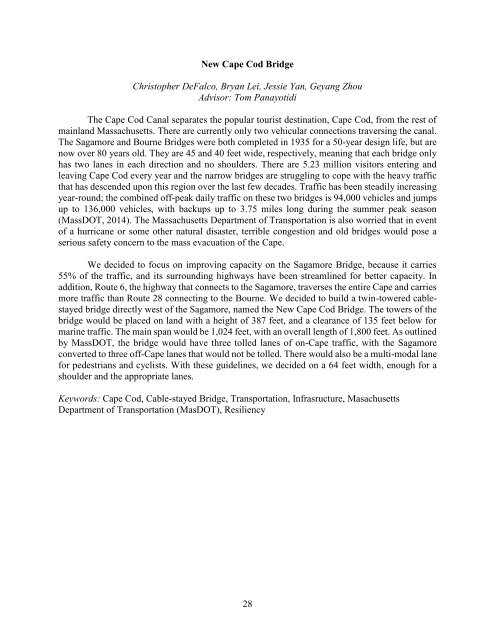Senior Design Expo 2019
The Senior Design Expo, held annually in May at Columbia University, is an opportunity for Columbia Engineering students to showcase what they have learned in their foundational math and science courses together with their engineering courses in innovative, creative, and purposeful designs and prototypes. Each year the Expo showcases more than 60 projects across all nine departments. Projects have included cutting-edge robotics, the New York City subway system, language technology, proposals for bridges to span the Hudson river, and much more.
The Senior Design Expo, held annually in May at Columbia University, is an opportunity for Columbia Engineering students to showcase what they have learned in their foundational math and science courses together with their engineering courses in innovative, creative, and purposeful designs and prototypes. Each year the Expo showcases more than 60 projects across all nine departments. Projects have included cutting-edge robotics, the New York City subway system, language technology, proposals for bridges to span the Hudson river, and much more.
You also want an ePaper? Increase the reach of your titles
YUMPU automatically turns print PDFs into web optimized ePapers that Google loves.
New Cape Cod Bridge<br />
Christopher DeFalco, Bryan Lei, Jessie Yan, Geyang Zhou<br />
Advisor: Tom Panayotidi<br />
The Cape Cod Canal separates the popular tourist destination, Cape Cod, from the rest of<br />
mainland Massachusetts. There are currently only two vehicular connections traversing the canal.<br />
The Sagamore and Bourne Bridges were both completed in 1935 for a 50-year design life, but are<br />
now over 80 years old. They are 45 and 40 feet wide, respectively, meaning that each bridge only<br />
has two lanes in each direction and no shoulders. There are 5.23 million visitors entering and<br />
leaving Cape Cod every year and the narrow bridges are struggling to cope with the heavy traffic<br />
that has descended upon this region over the last few decades. Traffic has been steadily increasing<br />
year-round; the combined off-peak daily traffic on these two bridges is 94,000 vehicles and jumps<br />
up to 136,000 vehicles, with backups up to 3.75 miles long during the summer peak season<br />
(MassDOT, 2014). The Massachusetts Department of Transportation is also worried that in event<br />
of a hurricane or some other natural disaster, terrible congestion and old bridges would pose a<br />
serious safety concern to the mass evacuation of the Cape.<br />
We decided to focus on improving capacity on the Sagamore Bridge, because it carries<br />
55% of the traffic, and its surrounding highways have been streamlined for better capacity. In<br />
addition, Route 6, the highway that connects to the Sagamore, traverses the entire Cape and carries<br />
more traffic than Route 28 connecting to the Bourne. We decided to build a twin-towered cablestayed<br />
bridge directly west of the Sagamore, named the New Cape Cod Bridge. The towers of the<br />
bridge would be placed on land with a height of 387 feet, and a clearance of 135 feet below for<br />
marine traffic. The main span would be 1,024 feet, with an overall length of 1,800 feet. As outlined<br />
by MassDOT, the bridge would have three tolled lanes of on-Cape traffic, with the Sagamore<br />
converted to three off-Cape lanes that would not be tolled. There would also be a multi-modal lane<br />
for pedestrians and cyclists. With these guidelines, we decided on a 64 feet width, enough for a<br />
shoulder and the appropriate lanes.<br />
Keywords: Cape Cod, Cable-stayed Bridge, Transportation, Infrasructure, Masachusetts<br />
Department of Transportation (MasDOT), Resiliency<br />
28








